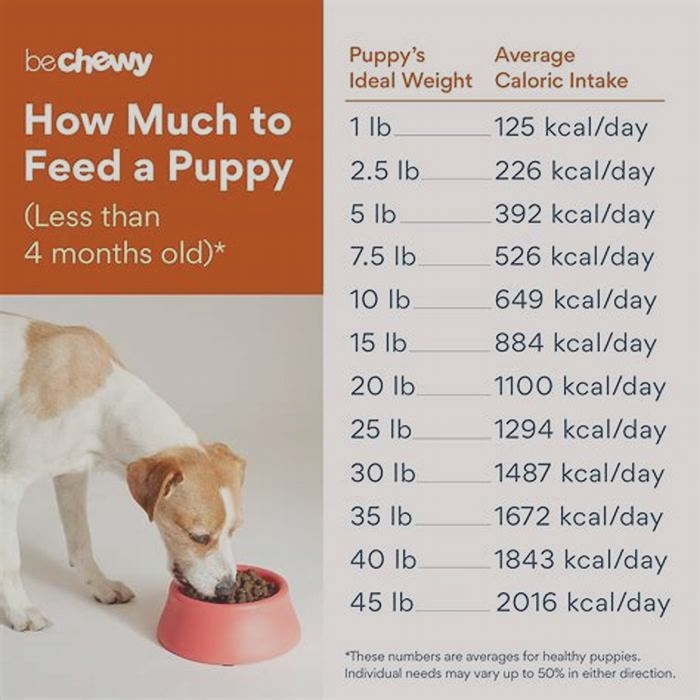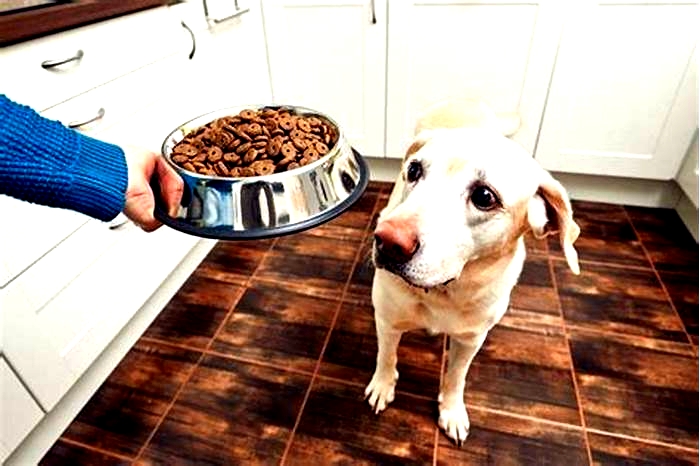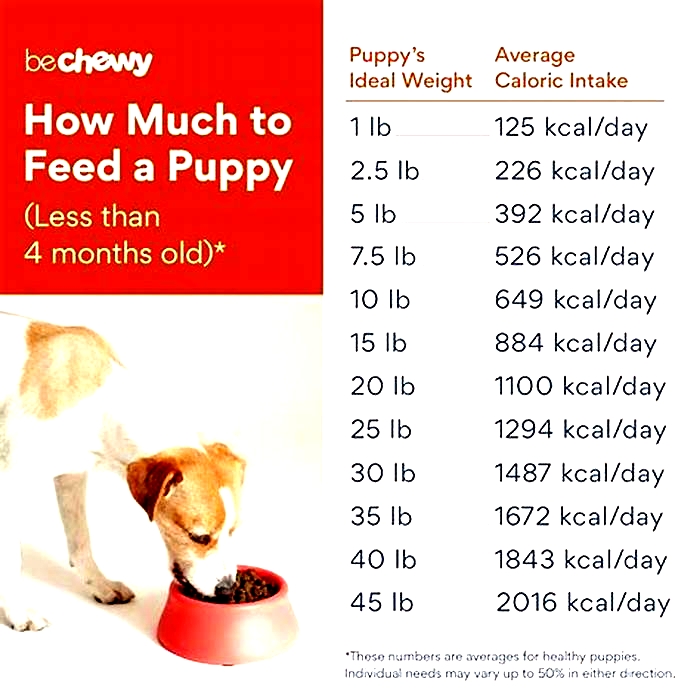When changing dog food too quickly what are the symptoms

How to Switch & Transition Dog Foods
Maybe your veterinarian has recommended a prescription diet, or perhaps youve simply decided to try a new brand. Whatever the reason for the switch, changing your dogs diet is more complex than simply pouring the new food into a bowl. In order to avoid upsetting your dogs stomach, you will need to transition to the new food the right way. Heres the best way to switch dog foods.
How to Change Your Dogs Food
Switching your dogs food abruptly can cause gastrointestinal upset such as vomiting, diarrhea, and a decreased appetite. Any time you decide to change your dogs food, you should transition to the new diet gradually in order to give your dogs system time to adjust to the change. Ideally, these transitions should happen over 5-7 days. During this transition, you will gradually incorporate more and more of the new food by mixing it with your dogs current diet. For most dogs, a good diet transition will look like this:
- Day 1: 25% new diet and 75% old diet.
- Day 3: 50% new diet and 50% old diet.
- Day 5: 75% new diet and 25% old diet.
- Day 7: 100% new diet.
Some dogs with sensitive stomachs, food allergies, or other gastrointestinal diseases may need an even longer transition period. The key to a good diet transition is monitoring your dogs individual response. If, at any point during the diet transition, your dog displays concerning signs such as changes in appetite, vomiting, or diarrhea, you should proceed more slowly. And if you have transitioned gradually and your dog is still experiencing stomach upset, it is best to consult with your veterinarian. In some cases, it may be necessary to choose a different diet.


Adverse Food Reactions in Dogs
An adverse food reaction is a blanket term used to describe a number of different food-related illnesses in dogs such as food allergies, food intolerance, and other gastrointestinal diseases. Many people will describe their dogs as having food allergies but this is not always accurate. True allergies involve a very specific response from the dogs immune system and this is not definitively diagnosed in many cases. Thus, it is more accurate to refer to these events as adverse food reactions.
Adverse food reactions can present with gastrointestinal symptoms, cutaneous symptoms, or a combination of the two. Gastrointestinal signs of an adverse food reaction include nausea, vomiting, diarrhea, and changes in appetite. Cutaneous symptoms include a wide range of signs such as itching, skin inflammation, hair loss, and many different types of rashes. There are many other illnesses that can cause similar symptoms, so it is important to have your dog evaluated by your veterinarian if these symptoms occur.
If your veterinarian suspects your dog is having an adverse food reaction, they may recommend performing an elimination diet trial. This means your dog will eat only a prescription hypoallergenic diet and no other food sources for at least eight weeks. If your dogs symptoms resolve during the diet trial, this can be a sign that food was the culprit. At the end of the eight-week trial, your veterinarian may also perform a challenge trial by reintroducing certain foods into your dogs diet to see if they provoke another reaction. The challenge trial can help you and your veterinarian determine exactly which foods are problematic for your dog, so you can avoid them in the future.


The Proof is in the Poop!
The best way to monitor your dogs digestive health is to pay attention to the quality of the stool. While minor variations in stool color and consistency are normal, any major changes can indicate a problem that needs to be addressed. A great way to evaluate your dogs stool is to use aFecal Scoring Chart. An ideal fecal score is 34. Lower numbers may indicate dehydration or constipation, while higher numbers are indicative ofgastrointestinal upset, which can be due to a variety of factors. If your dogs stool is consistently outside of the normal range, it is recommended that you consult your veterinarian regarding your dogs digestive health.
How to Choose a Dog Food
Choosing an appropriate dietfor your dog is a complicated process. The sheer number of dog food options available is overwhelming. Unfortunately, there is no one diet that is best for every dog. Just like humans, dogs are individuals and their dietary needs vary depending on factors such as age, health, and personal preferences.
To make the process even more complicated, there are also a lot ofmyths about dog foodon the internet. Many people fall victim to advertising campaigns or scare tactics warning them away from commercial dog foods. Fortunately, theWorld Small Animal Veterinary Associationhas published a guide entitled The Savvy Dog Owners Guide: Nutrition on the Internet to help pet owners decipher fact from fiction when doing their own research about dog food.
Learninghow to read a pet food labelcan also help demystify the process of choosing a dog food. The information on a pet food label is guided by theAssociation of American Feed Control Officials (AAFCO). AAFCO is responsible for establishing definitions for many of the terms you will find on a bag of dog food. Understanding theselabeling requirementscan make it easier to identify which products are best for your dog. Look for the words complete and balanced diet on the label.
Findingthe best food for your dogcan be a lengthy process, but with the right tools and a gradual transition, you can ensure the switch is successful. During the transition, be sure to monitor your dogs appetite, behavior, and stool quality to help determine whether the new diet is the right choice for your dog. As always, your veterinarian is your best resource for information regarding your dogs health and nutrition.
Symptoms of Changing Your Dogs Food Too Quickly: 5 Tips on Switching Dog Food
Checking the ingredients in your dogs kibble helps ensure you choose a high-quality recipe, helps identify potential allergens or sensitivities, and helps avoid harmful additives or synthetic ingredients. By reviewing the ingredient list, you can make informed choices that promote your dogs well-being and provide them with a balanced and healthy diet.
Since dogs are primarily carnivorous, they require a diet rich in meat protein for optimal health. Opting for pet food with a high quality protein source as the first ingredient can help ensure that your dog consumes a high-protein diet.
When reviewing the ingredient list on dog food, keep in mind that ingredients are listed in descending order by weight, with the largest amounts listed first. This means that the ingredients that have the highest inclusion in the recipe will be at the top of the list. Both fresh whole protein and high quality meat meals are great first ingredients to look for.
Changing Dog Food for Your New Pup
If you've ever seen a dog chow down on the contents of an overturned trash can, you might be tempted to think all dogs have iron stomachs. The reality, however, is that dogs can be sensitive to what they eat and changing dog food abruptly can cause nausea, soft stool and loss of appetite.
Whether you just brought home a new pup or you need to switch your existing dog's food, here's how to do it without causing them discomfort.
Keeping Your New Dog on Their Current Food
If you just adopted a new dog, remember that this can be a stressful time. To minimize the number of changes they'll need to adjust to, for the first week or so, stick with the same food they were eating before you adopted them. This may help them feel more at home in their new digs which is just as good for their emotional health as it is for their digestion.
Find out as much information about your dog's meals as you can from the shelter or previous pet parent, including the brand and type of food and how much and how often they were fed. Ideally, the shelter will provide you with enough food for your pup's first week. If not, pick up a small bag before bringing your dog home. Once they seem comfortable in their new environment, you can gradually transition their food to your preferred option.

Switching Your Dog's Food Gradually
While especially important for new dogs, any transition between dog foods should be handled gradually. Abrupt changes may result in gastrointestinal disturbances, which can compromise your dog's health and comfort. To avoid this, slowly transition your dog to any new food over a period of several days. A good rule of thumb is to add a little more of the new food while reducing the old food over the course of a week. Follow this general guideline when changing dog food:
Days 1-2: Mix 25% of the new food with 75% of the old.
Days 3-4: Mix 50% of the new food with 50% of the old.
Days 5-6: Mix 75% of the new food with 25% of the old.
Day 7 and onward: Feed your dog 100% new food.
Monitoring Your Dog During the Transition
Keep a close eye on your dog's response to their new food during the transition period. In addition to signs of stomach upset, such as vomiting or rejecting the new food, monitor their stool. If it appears runny or abnormally soft, return to a recent old-to-new ratio that did not upset their stomach and make smaller incremental changes, extending the transition period to two weeks. If their signs still don't resolve, contact your veterinarian.
What to Do if Your Dog Doesn't Tolerate a New Food
In some cases, a dog may not tolerate a new food no matter how slowly you go, and that's OK. They may not like the taste or texture of their new dog food, or they might have an allergy or intolerance to one of the formula's ingredients. Your vet can help you determine whether this might be the case and recommend a solution. In the meantime, stop feeding your dog the new food entirely and shift them back to what they were eating before the transition.
In these situations, it's always best to reach out to your vet for advice. They may recommend bringing your dog in for a checkup to rule out any underlying health concerns.
Plan B: Transitioning Dog Food Quickly
What if your new dog's previous food is unknown to you, it's on recall or you simply can't get your hands on it? In these cases, introduce your dog to their new food slowly by feeding them small meals every four to six hours, keeping an eye out for signs of trouble in between meals.
Making Food Changes Easy
Your dog's nutritional requirements will change over time, and you shouldn't be afraid to update their formula to ensure they're getting what they need. By slowly transitioning your dog to new foods, you can avoid stomach issues commonly associated with abrupt food changes and make the change easier on you and your canine companion. Always make sure to provide access to fresh, clean water as well, and don't hesitate to contact your vet for additional guidance.
Contributor Bio

Dr. Sarah Wooten
A 2002 graduate of UC Davis School of Veterinary Medicine and certified veterinary journalist, Dr. Sarah Wooten has 16 years experience in small animal veterinary practice, is a well known international speaker and writer in the veterinary and animal health care spaces, and is passionate about helping pet parents learn how to care better for their fur friends.
Changing Dog Food Too Quickly | Symptoms & Tips
At some point, you might find it necessary to change your dog's food. Factors like age, activity levels, and health considerations can all prompt the need for a dietary adjustment.
Here are a few situations in which changing your dog's food may be appropriate:
Age: When your puppy reaches around their first birthday (or later for larger breeds), it's time to transition to adult dog food. Around the age of seven, most dogs are considered seniors and may benefit from switching to a senior formula.
Weight: If your dog is not in their ideal body condition, your veterinarian might suggest a weight management formula. Not all weight concerns necessitate changing the food itself; sometimes adjusting the portion size of the current food can be sufficient. Your veterinarian can guide you in determining the best course of action for your dog's needs.
Activity Levels: Dogs engaged in activities like shows, sporting events, agility competitions, or demanding jobs may require a specific formula tailored to support their active lifestyles. Such dog foods often contain higher levels of protein and calories. As dogs retire from these activities, switching to a lower-calorie food may be necessary to prevent unnecessary weight gain.
Health: Certain foods have been specifically formulated to assist veterinarians in managing various health conditions. For instance, your veterinarian may recommend a therapeutic formula to address the unique nutritional requirements of dogs with gastrointestinal issues.
Switching your puppy or dog's food may seem like a simple task, but doing it too quickly can lead to unwanted consequences. Common symptoms of changing dog food too quickly include diarrhea, vomiting, loss of appetite, and regurgitation. In this article, we'll explore these symptoms, the importance of a gradual transition, and how to make the process smoother for your furry friend.
Symptoms of Changing Dog Food Too Quickly

Changing your dog's food abruptly can disrupt their digestive system, resulting in various symptoms. These symptoms may start off mild but can worsen if ignored, potentially leading to more severe health problems.
Symptoms in Dogs:
- Diarrhea
- Vomiting
- Regurgitation
- Changes in stool color
Symptoms in Puppies:
- Vomiting
- Diarrhea
- Loss of appetite
The Role of Digestive Flora in Dietary Changes
Both puppies and dogs have a complex ecosystem of bacteria in their digestive tracts, known as gut flora. These bacteria are crucial for the digestion and absorption of nutrients. A sudden change in your pet's diet disrupts this balance, leading to gastrointestinal issues like diarrhea or vomiting. To help restore balance, consider using a vet-approved probiotic when introducing a new diet.
Age and Health Conditions Matter
The age and health of your pet play a vital role in determining their ability to handle dietary changes. Older dogs, puppies, and dogs with specific health conditions may need more gradual transitions and closer monitoring.
Senior Dogs and Dietary Changes:

Older dogs may have more sensitive stomachs and may require a longer transition period when changing foods. In some cases, they may also need specific diets tailored to their health needs.
Puppies and Dietary Changes

Puppies have delicate digestive systems and need special puppy food. If changing their diet, it should be done gradually, and the new food should meet all their nutritional needs.
How to Switch Dog Food Gradually
A gradual transition to new dog food over 5-7 days allows your pet's system to adjust effectively. Here's a suggested transition schedule:
- Days 1-2: 75% old food, 25% new food
- Days 3-4: 50% old food, 50% new food
- Days 5-6: 25% old food, 75% new food
- Day 7 onwards: 0% old food, 100% new food
Remember that this is just a guide, and you can adjust the transition speed based on your pet's reactions.
Understanding Ingredients in Dog Food
The quality of ingredients in dog food plays a significant role in how your pet reacts to a new diet. Some pets may be intolerant or allergic to certain ingredients. Common ingredients to watch out for include grains, protein sources, and artificial additives.
Common Mistakes to Avoid

When switching dog food, avoid these common mistakes:
- Switching Too Many Foods at Once: Introduce one food at a time to monitor your pet's reaction.
- Ignoring Portion Sizes: Adjust portion size according to the new food's feeding guidelines.
What to Do if Your Dog Has Diarrhea
After Changing Food: If your dog develops diarrhea after a food switch, consider reverting to the old food and reintroducing the new food more gradually. If symptoms persist for more than three days, consult a vet immediately.
Holistic Approaches to Dietary Transitions
In addition to veterinary care, some holistic practices can support a smooth dietary transition for your pet:
- Regular Exercise: Promotes digestion and helps with adjusting to a new diet
- Providing a Calm Environment: Reduces stress, aiding in food adaptation.
The Influence of Breed and Size
Different dog breeds and sizes may react differently to dietary changes. Consider their specific nutritional needs and preferences when choosing a new diet.
For larger breed dogs, it's essential to provide diets that promote joint health and regulate growth. Additionally, a gradual transition may be necessary to avoid potential gastrointestinal complications.
In contrast, small breeds tend to have swifter metabolisms and may benefit from diets with higher calorie content. They may also find smaller kibble sizes more suitable for ease of consumption.
Understanding Food Labels
When switching your dog's food, make sure to read pet food labels carefully. Look for the ingredient list and nutritional adequacy statement to ensure your pet's needs are met.
Changing your dog's food too quickly can lead to unwanted symptoms, but with a gradual transition and proper monitoring, you can help your furry friend adjust smoothly. Always consult your vet if you have any concerns about your pet's dietary changes.

No matter how gradually you transition your dog's diet, the results are consistently superior when you make the switch to high-quality food, and that's precisely what we offer at Jiminy's. Explore our selection ofdelicious and nourishinginsect based dog food options today!









